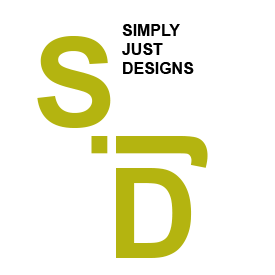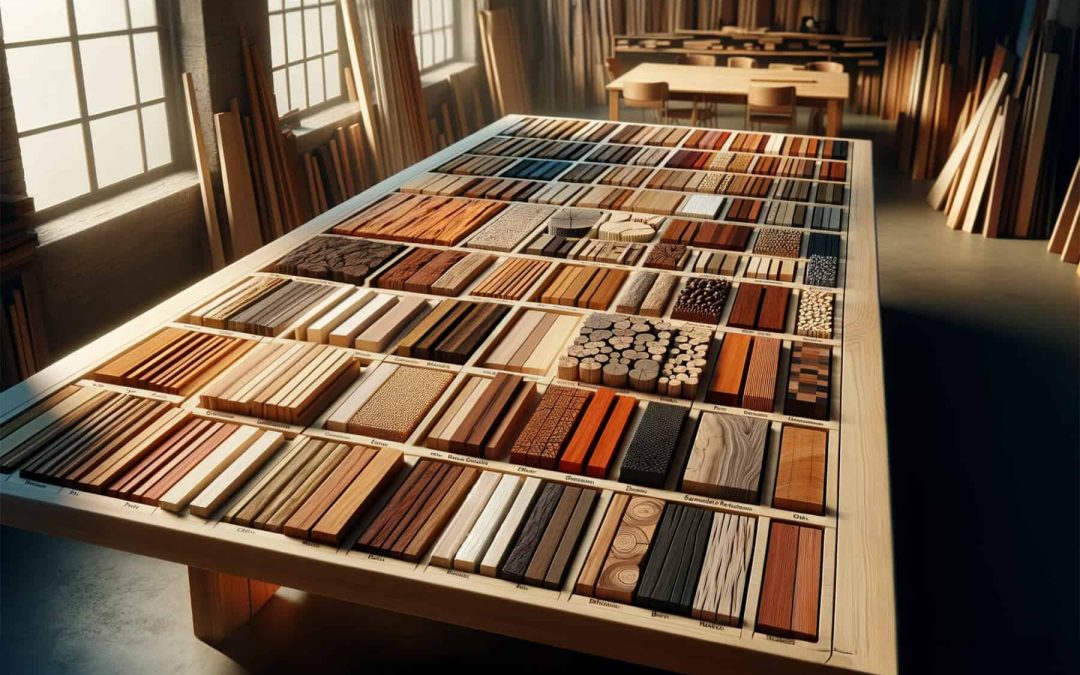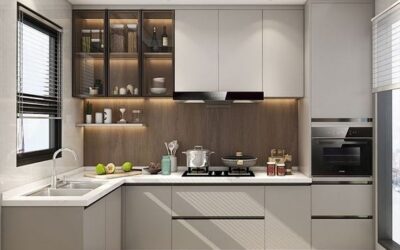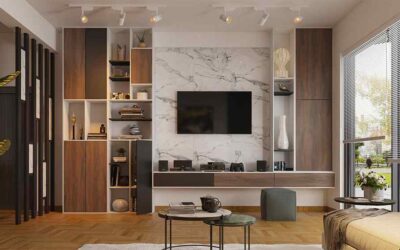In interior design, a variety of materials are used to create functional, aesthetic, and comfortable spaces. The choice of materials plays a crucial role in defining the style, mood, and overall atmosphere of a room.
-
Here are some common types of materials used in interior design:
-
Wood:
- Hardwood: Oak, mahogany, walnut, and maple are popular choices for furniture, flooring, and cabinetry due to their durability and rich appearance.
- Softwood: Pine, cedar, and fir are often used for furniture and decorative elements.
- Engineered Wood: Materials like plywood, MDF (medium-density fibre board), and particleboard are used for cost-effective and versatile applications.
-
Metal:
- Steel: Commonly used in structural elements and modern furniture design.
- Aluminium: Lightweight and corrosion-resistant, often used in contemporary furniture and fixtures.
- Brass and Copper: Add warmth and elegance, commonly used in decorative elements and accessories.
-
Stone:
- Marble: Known for its luxurious appearance, marble is used in countertops, flooring, and decorative accents.
- Granite: Durable and resistant to heat, often used for countertops.
- Travertine, Slate, and Limestone: Natural stones used for flooring and wall cladding.

-
Glass:
- Clear Glass: Allows light to pass through, commonly used for windows, doors, and decorative items.
- Frosted or Textured Glass: Provides privacy while allowing light transmission, often used in doors or partitions.
- Mirrored Glass: Adds a sense of space and reflects light, commonly used in furniture and decor.
-
Fabric and Textiles:
- Cotton: Natural, breathable, and versatile; used for upholstery, curtains, and bedding.
- Linen: Known for its textured appearance and breathability, often used for curtains and upholstery.
- Velvet: Luxurious and soft, commonly used for upholstery and drapery.
- Synthetic Fabrics: Polyester, nylon, and microfiber are durable and stain-resistant, suitable for various applications.
-
Leather:
- Genuine Leather: Durable and luxurious, used for furniture
- Faux Leather: A synthetic alternative that mimics the look and feel of genuine leather, often used in budget-friendly furniture.
-
Plastic and Acrylic:
- Polycarbonate: Transparent and durable, used in modern furniture and accessories.
- Polypropylene: Lightweight and versatile, used in chairs and other furniture.
- Acrylic: Transparent or colored, used for furniture, decor, and accessories.
-
Concrete:
- Polished Concrete: Used for flooring, countertops, and modern design
- Textured Concrete: Provides a raw and industrial aesthetic, often used for accent walls.
-
Ceramic and Porcelain:
- Ceramic Tiles: Durable and available in various designs, used for flooring, backsplashes, and decorative elements.
- Porcelain Tiles: Resistant to water and stains, suitable for bathrooms and kitchen

-
Bamboo and Rattan:
- Bamboo: Sustainable and lightweight, used for furniture, flooring, and decor.
- Rattan: Flexible and durable, commonly used in furniture and woven accessories.
-
Cork:
- Cork Flooring: Soft, comfortable, and eco-friendly, used for flooring.
- Cork Wall Coverings: Provide texture and acoustic benefits.
-
Stone Veneer:
- Thin slices of natural stone adhered to a backing material, providing the look of solid stone for various applications.
-
Mosaic Tiles:
- Small pieces of glass, ceramic, or stone arranged in patterns, commonly used for decorative wall or floor surfaces.
-
Wall Coverings:
- Wallpaper: Available in a variety of patterns and textures.
- Paint: The most common wall finish, available in numerous colors and finishes.
-
Lighting Fixtures:
- Metal: Often used for pendant lights, chandeliers, and lamps.
- Glass: Used for lampshades and decorative lighting
-
Natural Fibers:
- Bamboo and rattan: Used for furniture and decorative accessories.
- Jute and sisal: Used for rugs and carpets.
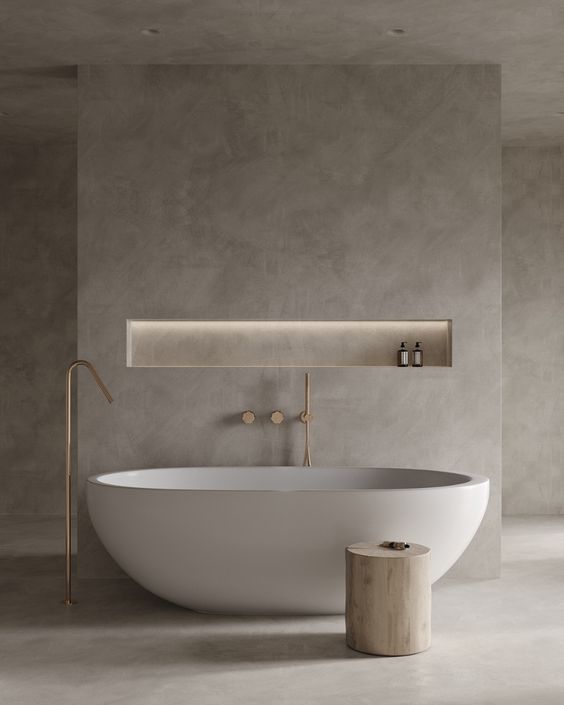
-
The Usage of Materials in Interior Design:
The usage of materials in interior design is a crucial aspect of creating functional, aesthetically pleasing, and cohesive spaces. Here’s a breakdown of how different materials are commonly used:
- Flooring:
- Wood: Often used for warmth and natural appeal in living areas and bedrooms.
- Tile: Durable and practical for kitchens, bathrooms, and high-traffic areas.
- Carpet: Adds comfort and warmth to bedrooms and living spaces.
- Concrete: Modern and industrial, suitable for contemporary designs.
- Walls:
- Paint: The most common wall finish, offering a wide range of colors and finishes.
- Wallpaper: Adds patterns, textures, and visual interest to specific walls.
- Wood Panelling: Creates a warm and textured look, often used in traditional or rustic designs.
- Tile: Used in kitchens and bathrooms for easy cleaning and a decorative touch.
- Ceilings:
- Paint or Wallpaper: Can be used to add color or patterns.
- Wood Beams or Panelling: Adds architectural interest.
- Coffered or Tray Ceilings: Create a sense of depth and sophistication.
- Furniture:
- Wood: Used for various types of furniture, from tables and chairs to bed frames.
- Metal: Common in modern and industrial designs for chairs, tables, and shelving.
- Upholstery: Fabrics like cotton, linen, leather, and synthetic materials for sofas, chairs, and cushions.
- Cabinetry and Countertops:
- Wood: Common for kitchen and bathroom cabinets.
- Granite or Marble: Luxurious choices for kitchen and bathroom countertops.
- Laminate or Quartz: Durable and versatile materials for countertops.
- Windows:
- Glass: Windows can be framed with various materials, and the type of glass can vary for energy efficiency and privacy.
- Curtains and Blinds: Textiles like cotton, linen, or synthetic fabrics are used for window treatments.
- Lighting:
- Metal: Common for light fixtures like chandeliers, pendant lights, and lamps.
- Glass: Used for lampshades and decorative lighting elements.
- Plastic or Acrylic: Modern lighting fixtures often incorporate these materials.
- Accessories and Decor:
- Ceramics and Porcelain: Used for decorative items like vases and figurines.
- Textiles: Pillows, throws, and rugs can add color and texture.
- Metal, Glass, or Wood: Common materials for decorative accessories like mirrors and picture frames.
- Technology Integration:
- Plastic and Metal: Used in the design of electronic devices and appliances.
- Built-in Features: Integration of materials like wood or stone in built-in entertainment units or smart home technology.
- Outdoor Spaces:
- Wood and Stone: Common materials for outdoor flooring and furniture.
- Metal: Used for outdoor furniture and fixtures for durability.

Source: Home decor
Conclusion
The selection of materials in interior design depends on factors such as the desired style, functionality, budget, and sustainability goals. A thoughtful combination of materials contributes to a well-balanced and visually appealing interior.
When designing interiors, it’s crucial to consider the function of the space, the desired aesthetic, and the practical aspects of each material, such as durability and maintenance requirements. Combining different materials thoughtfully can create a visually appealing and functional design.
Get Free Design

About Author apurva nagure
You May Also Like…
The Ultimate Guide to Small Modular Kitchen Designs in 2024
A brief overview of Small Modular Kitchen DesignThe space...
Top 10 TV Unit Designs to Enhance Your Home Interiors
Television unit designs have changed in response to changing...
